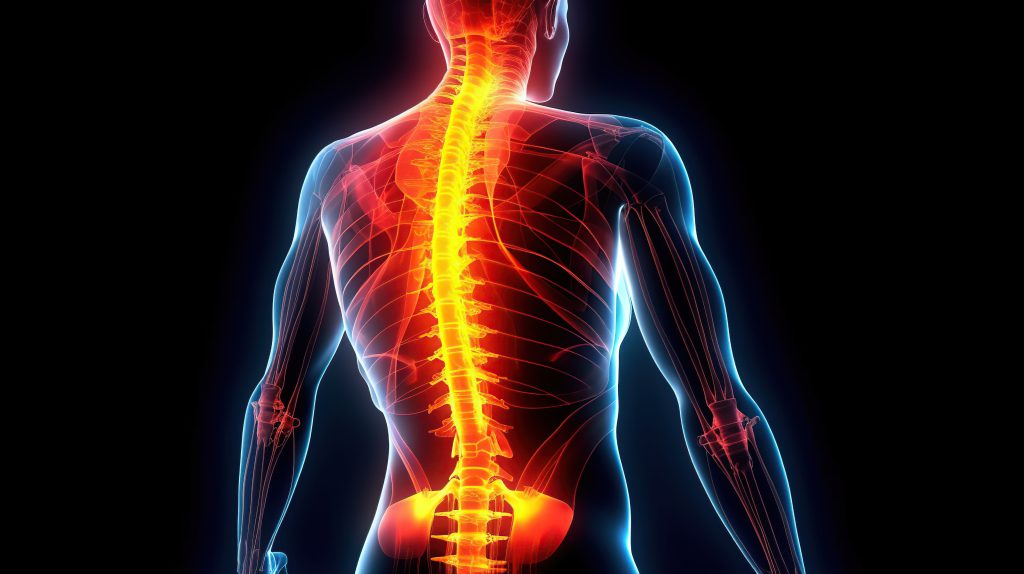
There is a critical need for more reliable methods to identify concussions quickly and ensure players’ safety.
Concussions, medically known as mild traumatic brain injuries (MTBIs), are one of the enduring challenges in the realm of contact sports. These injuries result from the forceful impact of a blow, bump, or jolt to the head or body, prompting the brain to move rapidly inside the skull and disrupting its normal functioning.
The statistics surrounding sports-related concussions in the United States underscore the urgency of addressing this issue. An estimated 1.6 to 3.8 million sports and recreation-related concussions occur annually in the country.
A significant portion of these cases involves children and youth aged 5-18, contributing to approximately 2.4 million sports-related emergency department visits every year. Concussions account for 6 per cent of these visits.
Organised high school sports display a particularly heightened risk, with American football alone accounting for over 60 per cent of all reported concussions.
Various technologies are beginning to be incorporated into sports, from VR devices to wearables, which seek to transform the landscape and reduce the impact of brain injuries on the pitch.
Smart mouthguards introduced by World Rugby
Concussion impact monitoring mouthguards have been introduced into professional rugby by World Rugby, an international federation representing a vast network of 8 million players worldwide.
The tech has been developed over the last decade by Edina-based Prevent Biometrics. The collaboration entails an initial investment of $2.5 million to provide athletes with Prevent’s smart mouthguard as part of a comprehensive 2024 head injury assessment programme.
The partnership will start with an elite women’s rugby competition and ultimately aims to enhance safety protocols in the sport and protect the health and wellbeing of players.
Prevent’s wearable device is designed to measure and report head impacts in real time. It provides data on force, location, direction and frequency of impacts, and screens out false positives.
The device has been validated by institutions such as Stanford University, Virginia Tech and the US Army Research Laboratory. Although it is not a diagnostic tool enables informed decisions concerning player participation and is poised to help prevent injuries on the pitch.
Detecting head injuries with the power of EEG
Columbia University researchers are on the cusp of bringing a new innovation into the world of amateur and professional sports with the development of the NoMo helmet.
The device, which is currently still in development, seeks to detect brain injuries in real time and has the potential to become the first of its kind in sports.
The NoMo incorporates electroencephalography (EEG) sensors, similar to those used in hospitals to monitor brain activity. Instead of traditional scalp placement, the sensors are discreetly integrated into the padding of a football helmet.
Upon detecting the distinct electromagnetic wave patterns associated with traumatic brain injuries, the NoMo helmet will transmit real-time alerts to a computer on the sidelines. This breakthrough technology is designed to provide rapid and objective assessments of potential concussions, eliminating the subjective judgment calls that coaches, athletic trainers and team physicians often face.
While other research teams have explored wearable devices for concussion detection, the NoMo helmet distinguishes itself by directly monitoring the brain’s physiological activity in response to impacts, providing a medically sound diagnosis. Initial tests have been conducted, with plans to refine and reduce the device’s size to ensure comfort when integrated into helmets.
The potential applications of the NoMo extend beyond football to various contact sports, such as hockey, wrestling, lacrosse, and potentially even soccer and basketball if the sensors can be miniaturised for headbands.
The researchers have founded a company called NoMo Diagnostics, with aspirations to collaborate with helmet manufacturers.
Though the current estimated cost per device stands at approximately $400, excluding the helmet, the team is committed to lowering this price point in the future. This innovation may offer schools and sports organisations a valuable tool to enhance player safety, aligning with their paramount concern for athletes’ welfare.
High-tech, shock-absorbent helmet under development at Stanford
Meanwhile, at Stanford University, researchers have developed an American Football helmet containing liquid shock absorbers which could reduce the effects of a knock to the head by one-third.
The team engineered a finite element model of an American football helmet, incorporating 21 liquid shock absorbers. These absorbers were designed to mitigate the impact of head collisions and reduce the strain on the brain.
The team rigorously tested the liquid shock-absorbing helmet against the evaluation protocol used by the National Football League (NFL) and compared its performance to that of existing helmet models.
In light of growing evidence that even sub-concussive impacts can have serious health implications, they extended their evaluation to include lower-velocity impacts. The team assessed head kinematics for each impact, producing a performance score that evaluated the helmet’s effectiveness in reducing brain strain.
The results were encouraging, with the liquid shock-absorbing helmet outperforming existing models in 33 out of 36 different impact scenarios. It also secured the best ‘Helmet Performance Score,’ a crucial factor in the NFL’s annual helmet safety rankings. The helmet excelled in protecting against concussions, particularly in the ‘side upper’ region, reducing impacts by 39-50 per cent across all velocities without compromising protection in other areas.
Dr Yuzhe Liu, the corresponding author, highlighted that the liquid technology showcased an average improvement of over 30 per cent for both low and high-velocity impacts.
The research team’s future plans involve further enhancements to the helmet model, including improvements to the facemask and chinstrap. They also aim to transition from the theoretical model to a physical helmet for real-world testing and anticipate adapting this technology for other sports in the future.
Tracking concussions with digital apps
The impact of concussions in sports is also being addressed by digital apps. One notable contender is SportSmart, a creation of the sports injury charity, Podium Analytics.
The digital platform facilitates risk management and injury prevention in schools and sports clubs, with 165,000 users in the UK. A prominent feature of SportSmart is its “concussion recognition and symptom severity tool,” supported by a traffic light system, which notifies coaches or teachers when a suspected concussion is detected.
Andy Hunt, the CEO of Podium Analytics, highlights the app’s role in addressing the critical gap in the reporting of head injuries at the grassroots level. He noted that a mere 2 per cent of UK schools and grassroots sports clubs have a system for recording and managing sport-related concussions.
In June of 2023, the UK government announced the launch of a two-year research programme aimed at examining the impact of concussions in grassroots sports. Using SportSmart, the study will track injury symptoms and their treatment, shedding new light on the prevalence of head injuries in amateur sports.
The research programme will play a central role in evaluating the effectiveness of the recently introduced Concussion Guidelines for Grassroots Sport, which were jointly announced by the government and the Sports and Recreation Alliance earlier this year.
Research uncovers new biomarkers for diagnosis of concussion
Researchers from Monash University and Alfred Health in Melbourne last month made a significant breakthrough in the diagnosis of concussions (mild traumatic brain injury or mTBI).
They have identified variations in certain proteins in the blood after head trauma that could be used to confirm concussions. This discovery has the potential to enhance the accuracy of mTBI diagnosis in emergency departments.
The study, which involved 74 participants aged 18-50 with diagnosed mTBI and a control group without head injuries, revealed that levels of interleukin-6 (IL-6), a cytokine protein regulating inflammation and immune processes in the body, significantly increased within six hours of mTBI. However, since IL-6 is not specific to the brain, the researchers also analysed region-specific proteins, including GFAP, UCH-L1, and NfL, to improve diagnostic accuracy.
GFAP exhibited “good accuracy” in distinguishing mTBI blood samples, while UCH-L1 showed “moderate/acceptable” accuracy. NfL, while not suitable for immediate diagnosis, became a more reliable marker after a week. The study’s lead researcher, Dr. Stuart McDonald, suggested that combining GFAP and IL-6 could enhance diagnostic accuracy by considering different aspects of the injury’s pathophysiology.
The applications of this research extend to hospitals, particularly in emergency departments where rapid concussion evaluation is critical. While it may not be immediately applicable to sporting events, it offers potential benefits for ongoing monitoring and management of mTBI in athletes.
Lead researcher Dr Stuart McDonald is considering trials of this diagnostic approach within elite sports settings, where it could play a role in improving the management of head injuries in sports.
VR headsets that can detect concussion
Neuroflex is pioneering a cutting-edge approach to concussion testing by revamping a well-established method known as vestibular ocular motor screening (VOMS). Traditionally, VOMS assessments are conducted in specialised hospital settings, involving a series of visual stimuli to gauge ocular function and potential concussion-related impairments.
Now, Dr David Stevens, a sleep health researcher at Flinders University’s Adelaide Institute for Sleep Health and the head of medical and research for Neuroflex, is introducing a novel solution through this innovative headset.
Neuroflex’s solution uses virtual reality goggles to measure ocular vergence, which assesses the alignment of a person’s eyes, along with their head and eye responses to visual stimuli following a potential concussion. The device is designed to lower the barriers to access to this technology.
The data collected by the Neuroflex headset provides insights into the specific nature and severity of a concussion. This information enables specialised neurological physiotherapists or ophthalmologists to intervene and offer appropriate support to people who have experienced a concussion.









